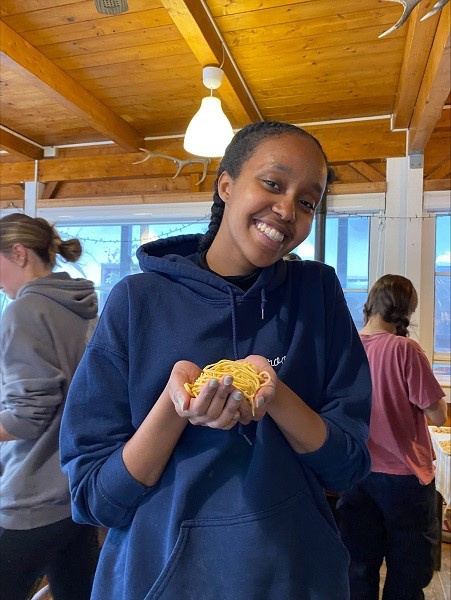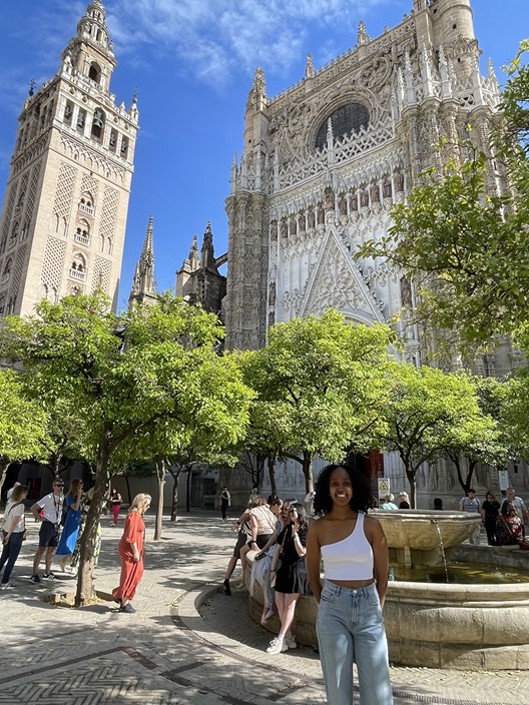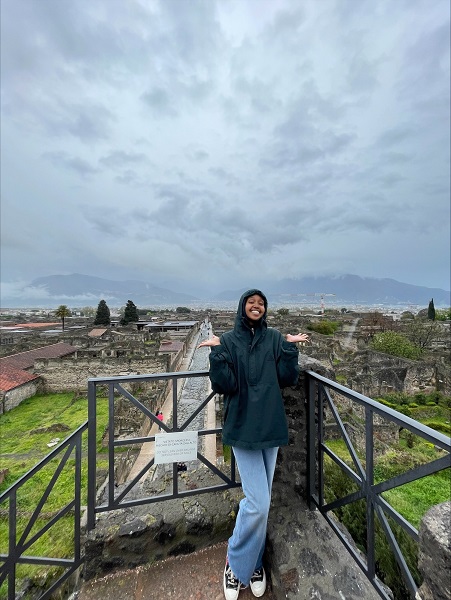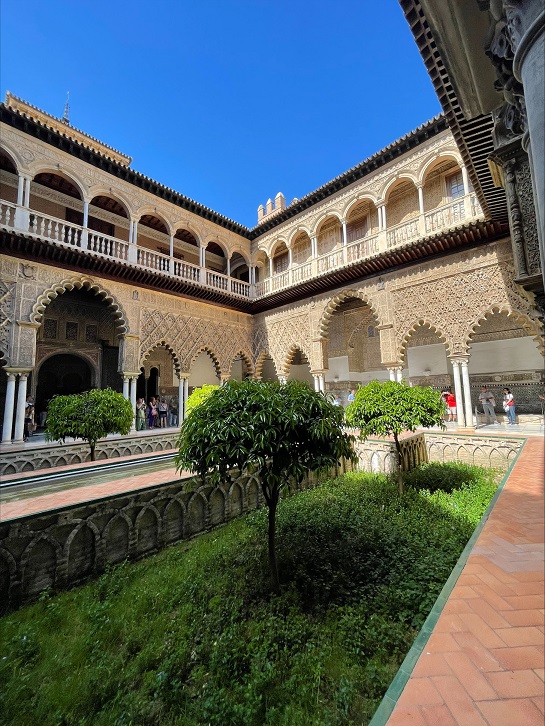Arabic from Rome to Seville with Wandering Winta!
.jpg)
marHaba again,
My name is Winta Girmai, and I am currently a senior majoring in Global Studies with an Anthropology and Arabic Language and Culture minor. This past spring semester, I had the wonderful opportunity to study abroad in Rome. As someone who grew up learning about the Italian influence on my home country, Eritrea, I have been interested in pursuing my passion to languages, even more! (Please see my former blog on Arabic and Eritrean “Dubai: An Extraordinary Cultural Consciousness!”)

My time abroad was nothing short of greatness as I tried my best to immerse myself in my surroundings and learn the deep history of the great city of Roma. Like the Arabic Language, Italian has been on my list of one of the languages I wanted to learn. Those languages have been an integral part of the cultural and linguistic identity elements of my home country in various forms of representation. As I began the journey, I realized that I always grew up using many of the Italian lexicon, at home.

Ever since I was younger, my parents would always end a conversation with “Ciao,” or when my mom needed a fork, she would ask me to grab the “Forchetta,” or when she wanted us to hurry up, she would say “Andiamo.” Yet, despite that, learning Italian was as challenging as was navigating a new city, country, and continent.

My passion to languages and their interconnected inclusive worth prompted a visit to Sevilla, Spain. On my first morning there, I realized that there was a familiar scent lingering around the streets. It was not until I looked across my friend's apartment window that I realized all the streets aligned with orange trees. On my first full day, I visited the Gothic-style Cathedral with its beautiful stained glass and bell tower allowing a panoramic view of the whole city of Seville.

On my second day, I explored the Alcazar de Sevilla by myself. At first glance, it looks like a regular-sized palace, but as you walk in, you see how spacious and well-laid it is. This palace was established during the Islamic influence on Seville. As you continue walking around, you see a beautiful collage of architecture and linguistic influence of Muslims, Arabs, Moorish, and Amazigh as well as Gothic, European, and Christian influence.

There were ceilings filled with splendid mosaics, intricate designs, and carefully designed arches allowing light to weave into the space in a stunning fashion. The domes were so tall and colorful, yet so much nature surrounded the villas with fountains. It was gorgeous. While wandering around, I met a street artist who immediately recognized where I was from and told me about her experiences in Seville. I purchased one of the art pieces she drew to remember this moment.

My time away from home was enriching in self-reflections and cross-cultural experiences. As the days drew closer to departure, I started to get bittersweet feelings about the memories I had created and the moments I cherished. Multilingualism and transdisciplinary connections of language and people is fascinating. Besides fostering critical international world views, languages are a means to empathy and understanding. I will forever be grateful to my parents, the school, and the people I met for making this trip a memorable experience for me.

My trip to Seville helped me witness Spain's Arabic/Islamic influence when I visited the Alcazar de Sevilla. I remember just walking into the royal palace. I was immediately wowed by it. I remember seeing Christian/ Catholic influence as I divided deeper into the palace. I quickly recognized the Arabic influence from the windows with designs, the tiles, arches, and the ceilings with geometric patterns. It made us wonder if people recognized the influence and how the color and design have stayed intact compared to everything else in the palace. Even though it's been hundreds of years, it surrounds you and even the Islamic influence with deciding not to have any images around, which made me instantly recognize that It was once a mosque.

I remember seeing little signs discussing the history behind the designs and nothing about the Arabic/Islamic influence. I was proud of recognizing it and couldn't wait to tell Dr. Abbadi. Anytime the signs had an Arabic word, I would read it and absorb the uniqueness and serene feeling the rooms provided. I will forever be grateful to my parents, the school, and the people I met for making this trip a memorable experience for me.

